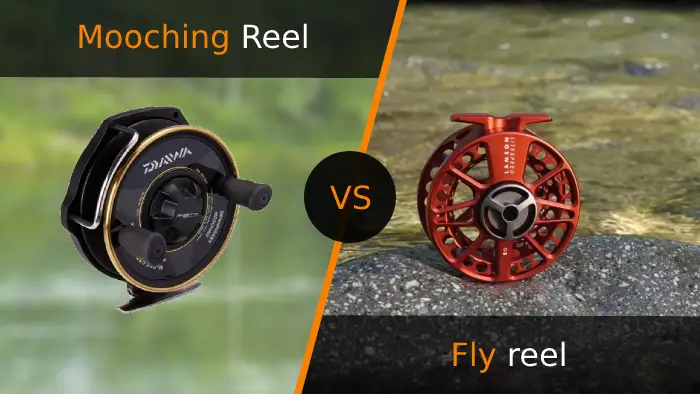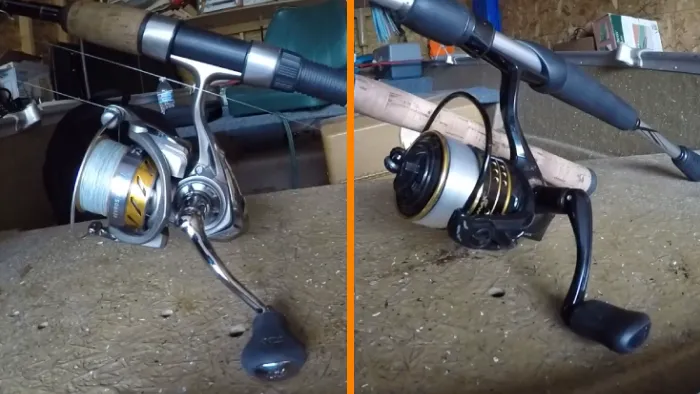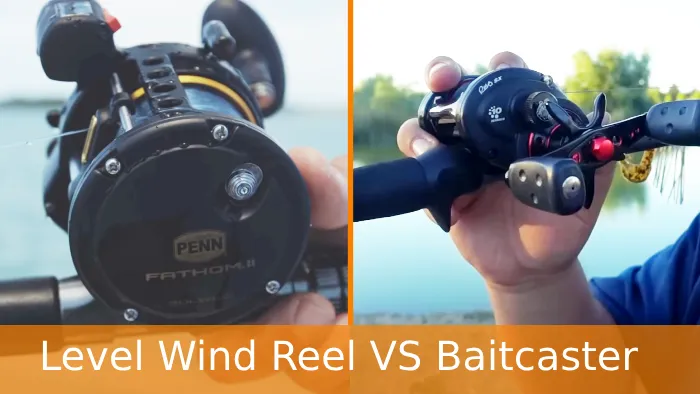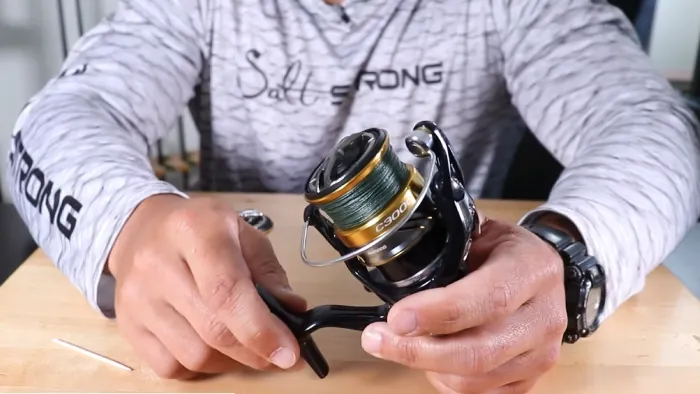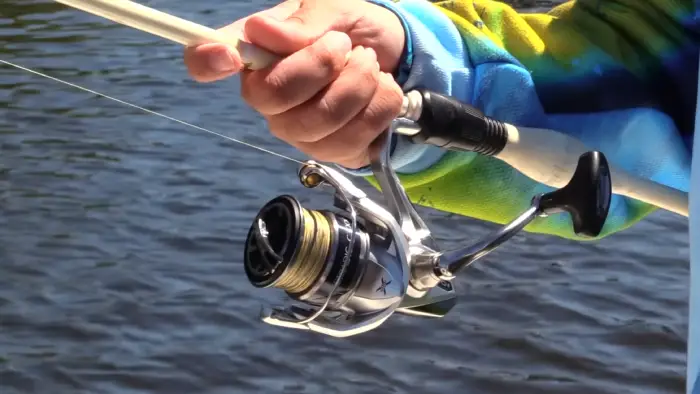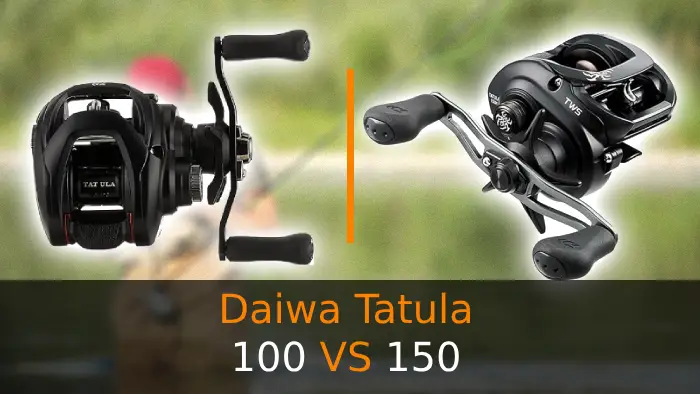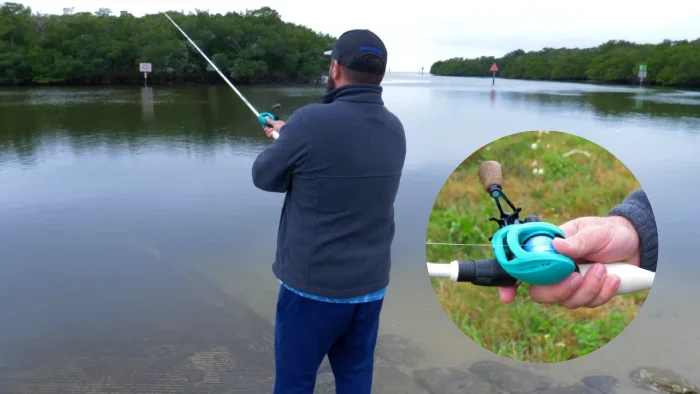Mooching Reel vs Fly Reel: 10 Differences to Improve Angling
Fishing is a popular pastime and hobby for anglers of all ages, but the reel you use can make or break your experience. To ensure you’re selecting the right fishing reel for your angling adventures, understanding the differences between mooching and fly fishing reels is crucial.
Mooching reels are heavier and designed for durability and handling tension, while fly fishing reels are lighter and more portable for casting. Also, mooching reels have strong disc drag systems for battling large fish, while fly fishing reels can be adjusted for precision and finesse.
Here we will discuss important distinctions such as fishing style and application such as their regional origins, reel design, arbor size, and more to help you choose the right reel.
The Differences Between Mooching Reel and Fly Fishing Reel
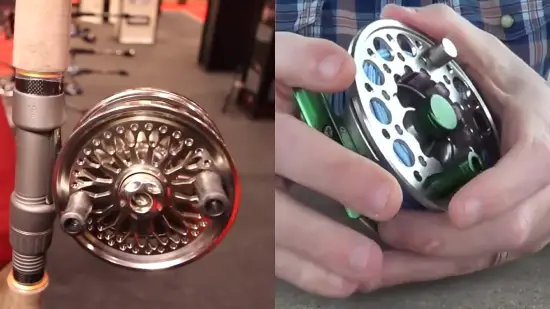
Regarding the differences between a mooching reel and a fly fishing reel, there are several key factors to consider. Here are the most important ones:
- Fishing style and application
- Origins and regional preferences
- Reel design and arbor size
- Reel action
- Number of handles
- Weight and portability
- Drag system
- Fishing line compatibility
- Fishing technique
- Target species and environment
Let’s examine each of these factors in more detail to understand the differences between mooching and fly fishing reels.
No 01. Fishing Style and Application
You should consider using a mooching reel for open water scenarios, as it’s ideal for targeting species like Coho and chinook salmon.
Mooching reels are specifically designed for trolling or downstream fishing, making them perfect for these types of situations. They offer a smooth and controlled drag system, allowing you to adjust the tension while battling powerful fish easily.
Conversely, fly fishing reels are tailored for the art of fly casting, offering an intimate and delicate approach to catching various fish species. These reels typically have a lighter drag system, allowing you to cast with ease and precision.
No 02. Origins and Regional Preferences
Mooching reels originated in Western Canada and Northern California, driven by the need to tackle the challenges of salmon fishing in those regions. These reels were designed for trolling, allowing anglers to present the bait or lure at controlled depths while maintaining a natural presentation.
On the other hand, fly fishing reels have a rich history that dates back to the 13th century in England. This angling technique uses artificial flies made of feathers, fur, and other materials to imitate insects or small fish, enticing the target species to strike.
These contrasting origins have shaped the regional preferences and fishing traditions surrounding mooching reels and fly fishing reels.
No 03. Reel Design and Arbor Size
For battling large fish, mooching reels feature large arbors to accommodate significant amounts of line under tension. This is crucial for effectively fighting and landing powerful fish.
Alternatively, fly fishing reels come in various arbor sizes based on the target species and specific fishing techniques. A smaller arbor is typically used for delicate presentations and lighter lines, while a larger arbor is preferred for faster line retrieval and increased line capacity.
The size of the arbor plays a vital role in the performance and suitability of each reel type for different fishing scenarios.
No 04. Reel Action
When comparing the reel action of a mooching reel to a fly fishing reel, it becomes evident that they possess distinct characteristics and functionalities.
Mooching reels, with their single-action design, prioritize simplicity and durability. These reels are built to withstand the rigors of heavy saltwater fishing and are often used for trolling or mooching techniques. Their smooth and consistent drag allows for precise line control and easy handling.
Conversely, although predominantly single-action, fly fishing reels offer more advanced features such as adjustable drag systems. These reels are specifically designed for fly fishing, where delicate presentations and accurate casts are crucial.
The drag system in fly reels allows for precise control over the line, enabling anglers to fight and land fish successfully.
No 05. Number of Handles
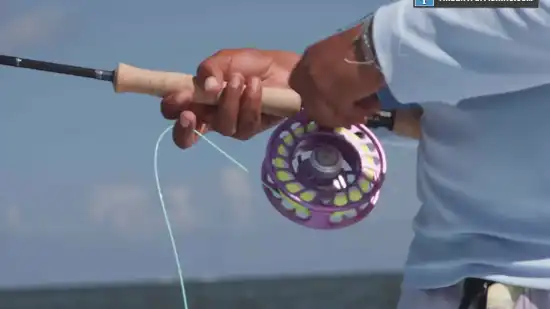
In high-speed runs and challenging fish battles, mooching reels are equipped with two handles for balance and control. The dual handles allow for a firm grip and allow the angler to easily maneuver the reel. This is crucial when dealing with powerful fish that can make sudden and aggressive movements.
On the other hand, fly fishing reels feature a single handle, primarily designed for the casting and retrieval process. The single handle allows for smooth and efficient line retrieval, ensuring a seamless fly-fishing experience.
No 06. Weight and Portability
If you’re looking for a lighter and more portable reel, then a fly fishing reel might be the better choice for you. Fly fishing reels are designed to be lightweight and easy to transport, catering to fly anglers’ mobility and casting requirements.
Mooching reels tend to be heavier due to their ability to handle more lines under tension and withstand the harsh conditions of saltwater fishing. The weight and portability of a reel are important considerations when selecting the right tool for your fishing needs.
A lighter reel allows for easier casting and reduces fatigue during long fishing sessions. The portability of a reel is crucial for anglers who need to travel to different fishing spots or hike long distances to reach their desired fishing location.
No 07. Drag System
Mooching reels typically have powerful disc drag systems, perfect for handling large and strong fish. These drag systems provide anglers with the control they need to successfully reel in their catch.
Then again, fly fishing reels offer a variety of drag systems, including click-and-pawl, disc, and hybrid options. These drag systems are specifically designed to cater to the delicate nature of fly casting and the unique requirements of fly anglers.
For example, the click-and-pawl drag system provides a subtle and smooth drag, essential for presenting flies to fish without spooking them. In contrast, the disc drag system offers a more powerful and adjustable drag, suitable for targeting larger fish species.
The hybrid drag system combines the benefits of both click-and-pawl and disc drag systems, providing anglers with a versatile and adaptable drag option.
No 08. Fishing Line Compatibility
For mooching reels, monofilament lines and Dacron backing are commonly used. Monofilament lines offer durability and strength, making them suitable for saltwater fishing. Dacron backing provides additional strength and helps to prevent line breakage.
On the other hand, fly fishing reels are designed to accommodate fly lines, leaders, and tippets. Fly lines are specially designed to float or sink, depending on the fishing technique used. Leaders and tippets, made from materials such as nylon or fluorocarbon, are used to connect the fly line to the fly.
No 09. Fishing Technique
You should understand the key differences between mooching reels and fly fishing reels in order to utilize each fishing technique effectively.
Mooching reels are specifically designed for trolling and downstream fishing methods. They require the angler to maintain a tight line and control live bait or lures in the current. These reels are often larger, with a higher line capacity, and are built to withstand the pressure of battling large fish.
Conversely, fly fishing reels are designed to cast lightweight flies onto the water’s surface. They have a smaller line capacity and are typically lighter in weight. Fly fishing reels are built with a smooth drag system to allow for the delicate presentation of flies and to handle the zipping runs of trout and other small game fish.
No 10. Target Species and Environment
Mooching reels are primarily used in saltwater environments, making them ideal for targeting species like salmon that inhabit deep-sea locations. These reels are designed to handle the challenging conditions of saltwater fishing and are equipped with corrosion-resistant materials.
Meanwhile, fly fishing reels aren’t suitable for saltwater use due to their vulnerability to corrosion. Instead, they’re specifically designed for freshwater environments and cater to a wide range of species found in rivers, streams, and lakes.
Matching the reel to the specific fishing conditions is crucial in fly fishing, as different species and environments require different gear and techniques.
Comparison Table Between Mooching Reel and Fly Fishing Reel
| Aspect | Mooching Reels | Fly Fishing Reels |
| Fishing Style and Application | Trolling, downstream fishing | Fly casting |
| Origins and Regional Preferences | Originated in Western Canada and Northern California | Historical roots dating back to 13th-century England; Global angling tradition |
| Reel Design and Arbor Size | Larger arbors for line capacity and handling large fish | Variable arbor sizes based on target species and techniques |
| Reel Action | Predominantly single-action | Predominantly single-action with variations and advanced features |
| Number of Handles | Equipped with two handles for balance during fish battles | Single handle designed for casting and retrieval |
| Weight and Portability | Heavier, designed for saltwater durability | Lighter and portable for casting mobility |
| Drag System | Powerful disc drag systems suitable for large fish | Range of drag systems tailored for precision and finesse |
| Fishing Line Compatibility | Often paired with monofilament and Dacron backing | Designed for fly lines, leaders, and tippets |
| Fishing Technique | Trolling, keeping a tight line, and controlling live bait or lures | Casting lightweight flies for precision presentation |
| Target Species and Environment | Suitable for saltwater and species like salmon | Primarily freshwater use, diverse range of species |
| Corrosion Resistance | Designed for saltwater, corrosion-resistant materials | Not always suitable for saltwater due to corrosion concerns |
Can I Use a Mooching Reel for Fly Fishing or Vice Versa?

While it’s possible to utilize a mooching reel for fly fishing or a fly fishing reel for certain trolling applications, they are not optimized for these purposes. Choosing the right reel for your specific fishing style ensures better performance and success.
Is an expensive fly fishing reel worth it?
While it’s true that a cheap reel may suffice for occasional fishing trips and smaller fish, investing in a high-quality reel is essential for serious anglers.
A durable and reliable reel is crucial when targeting larger fish species, such as salmon or steelhead. Expensive fly fishing reels are designed with features like a smooth drag system, sturdy construction, and corrosion resistance, which are necessary for handling the increased power and fight of these bigger fish.
Additionally, a high-quality reel will provide better line control, casting performance, and overall enjoyment on the water.
Mooching Reel or Fly Reel: Get Optimal Fishing Success
After diving into the world of mooching reels and fly fishing reels, it’s clear that they’re two different beasts.
Mooching reels are excellent for trolling and drifting, while fly fishing reels are perfect for casting and presenting flies. When choosing the best line for mooching reels, go for a strong and durable monofilament.
And as for expensive fly fishing reels, they may not be necessary unless you want to impress the fish with your fancy gear.
Understanding these key differences empowers anglers to make the right reel choice, enhancing their fishing experience and increasing their chances of success on the water.

